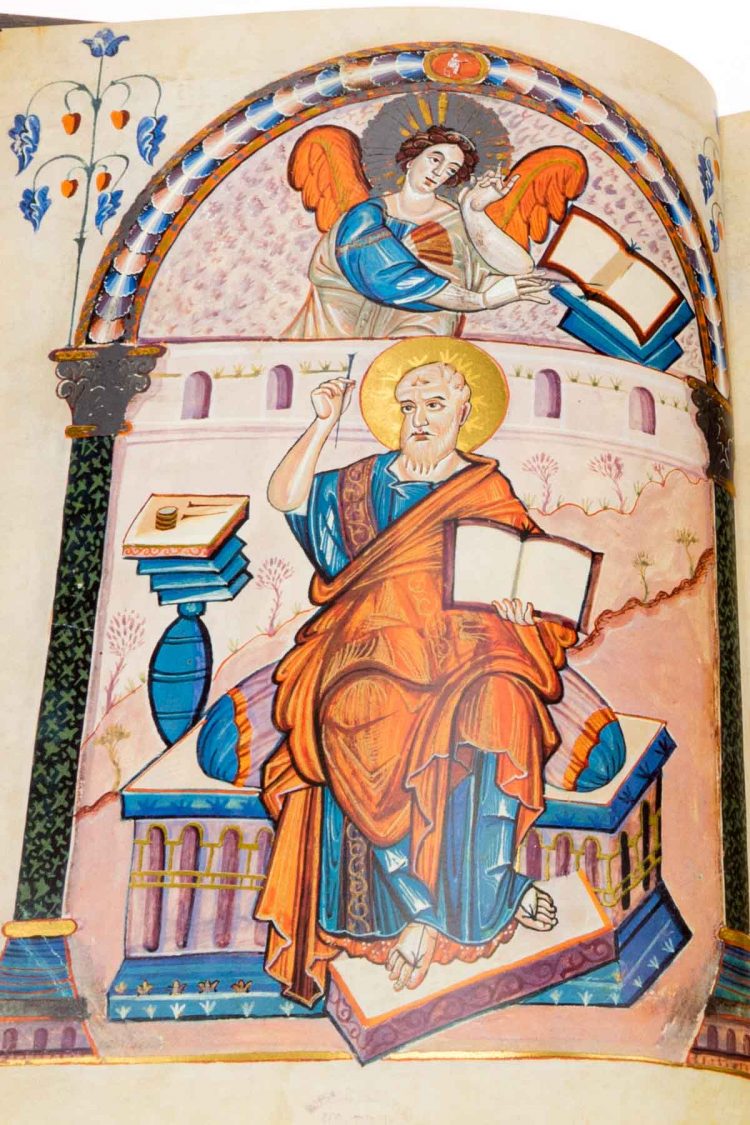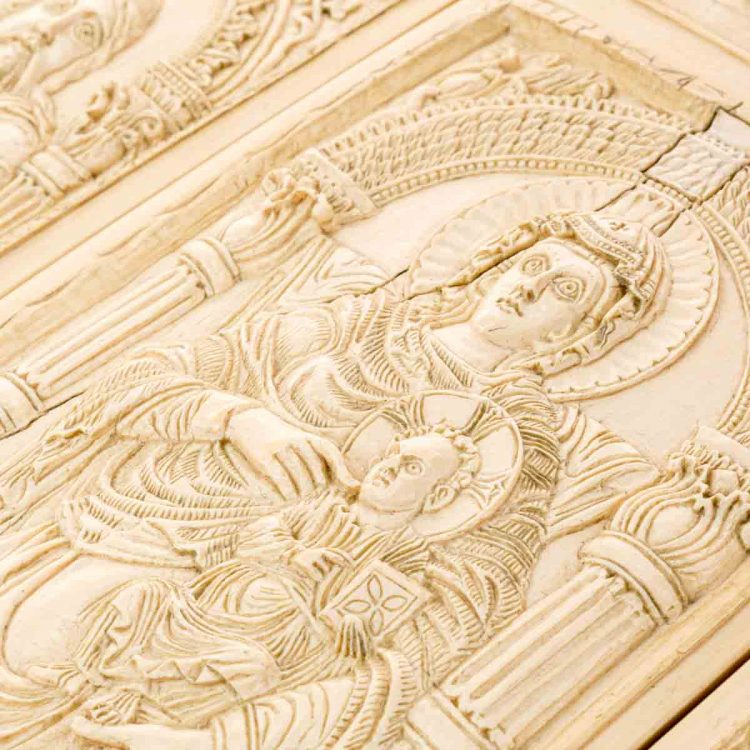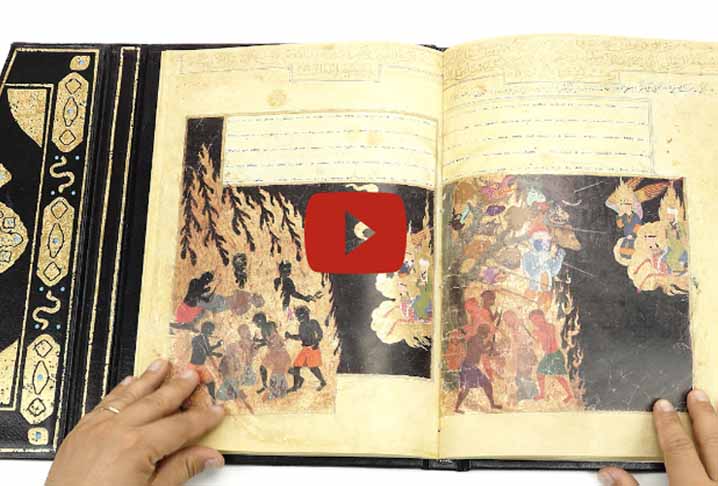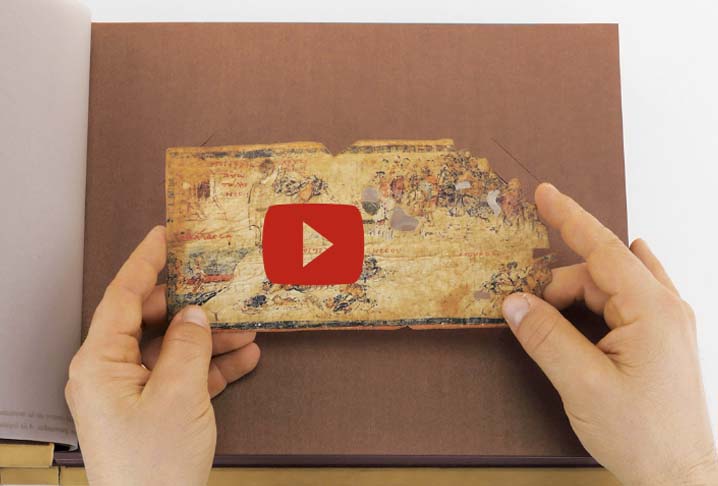The Lorsch Gospels, written with gold ink from beginning to end, is so well-preserved one would think it was made yesterday. Yet its full-page illustrations, glowing with real silver and held together by a carved ivory cover, reflect the height of artistic brilliance of Charlemagne’s court.

Since its origination around 810 at the court scriptorium of Charlemagne, this illustrated manuscript – made throughout in gold, silver, and purple, its binding made of ivory – was the most valuable and best protected at the Lorsch Abbey.
A Crowning Achievement of Carolingian Art

Around 810 the famous court scriptorium of Charlemagne at Aachen produced a most splendid manuscript, a collection of the Four Gospels of the New Testament, created by the most outstanding artists of this epoch, a book that Charlemagne himself may have held in his hands: the Lorsch Gospels.
It is without doubt the most precious and well-kept manuscript of the abbey which during seven centuries seemed to be used only at rare occasions in the cloister.
Described as euvangelium pictum cum auro scriptum habens tabulas eburneas (illustrated Gospel Book, written in gold, with ivory covers) it first appears in a book record of Lorsch Abbey dating back to around 860.
This manuscript remained unequaled in the abbey’s library for a great many years, and the abbey’s scriptorium also regarded the Gospels as an exemplary book, unsurpassed in its collections.
A Manuscript Illuminated in Purple and Gold
This monumental work of Carolingian art is also known as Codex Aureus, a name which indicates that this manuscript is among the rare manuscripts of the early Middle Ages which were written with gold ink from beginning to the end, over more than 400 pages.
Each page of the Lorsch Gospels shows colorful frames that are unsurpassed in form and style. Its luminous colors are so well preserved that one could think the manuscript had been written only a short time ago.
The magnificent full-page illustrations fascinate through their monumental size, among them the canonical tables at the beginning of each Gospel to help the reader find text passages; the pictures of the evangelists before each preface; or the luxurious incipit pages at the beginning of each individual Gospel text.
473 generously presented pages in a large format of approx. 37.0 x 27.0 cm; flawless white vellum made from calfskin of choice quality; gold and silver in abundance on every page; two purple pages; the rarest colors; the height of artistic know-how available at the court of Charlemagne: in the Lorsch Gospels, all these distinctive features combine.
A Most Valuable Ivory Cover

The expensive decoration of this luxurious manuscript is complete with the beautiful cover. To underline its importance and artistic value, the Lorsch Gospels were bound in a magnificent cover reflecting the height of early medieval artistic creation.
The five-part plates — the plate of the Virgin in the front cover and the plate of Christ at the back — represent the most extensive ivory series ever made in the workshops at the court of Charlemagne in Aachen and thus represent a true masterpiece which is today considered as one of the most valuable testimonies to human creativeness in general.
It consists of two splendid ivory plates which formed both the front and the back cover of the manuscript. These carvings were probably made in the court of Charlemagne around the year 810.
NEW WEEKLY VIDEOS
Find our more about Mi’ragnama: The Apocalypse of Mohamed (Paris, Bibliothèque Nationale de France) on our website!
Find our more about the Ambrosian Iliad (Milan, Biblioteca Ambrosiana) on our website!



